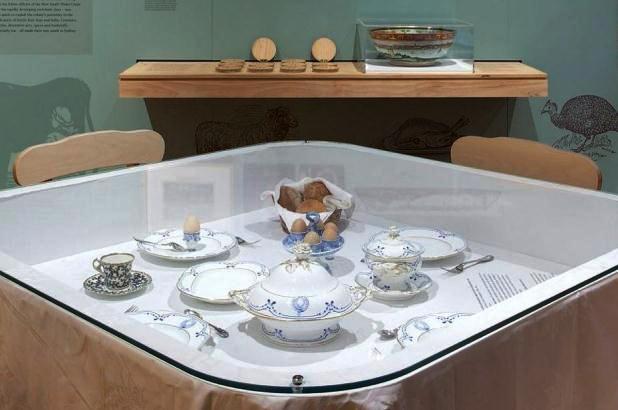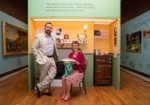From conserving a 19th century interior to chasing runaway cattle and blowing eggs for display, the life of a house museum curator is an unpredictable one!
We often recreate breakfast scenes in our houses and education programs, evoking a time when the first meal of the day certainly wasn’t grabbed at a takeaway or drive-through. The catch is that when we create a museum display using historic egg-cups, even with egg-cups from well into the 20th century, we have to turn to the chickens at Rouse Hill or Vaucluse House for help; the issue is that your typical modern supermarket-egg is substantially bigger than your typical 19th century egg, and they just don’t fit in an older egg cup without looking ludicrously over-scaled or tip over when you so much as wave a spoon at them. We also ‘blow’ the eggs so they can be used in a museum environment.
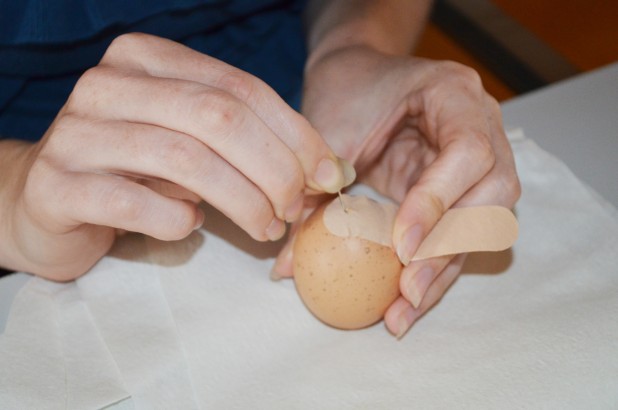
Getting ready to blow an egg for display in the Eat Your History: A Shared Table exhibition. Photo Scott Hill ©Sydney Living Museums
To do this, first cover one end with a bit of masking tape or a band-aid. Then make a tiny hole about a millimeter across using a pin, safety pin (our tool of choice) or compass point. Repeat at the other end. The hole at the end you won’t see can be a bit larger – for us this means the pointy end, which goes downwards into the eggcup.
Putting the piece of tape across first means the egg wont crack or break when you make the hole – its a neat trick that our colleague Anna Corkhill showed me. (Demonstrating just how multifaceted the life of a house museum curator can be, she also blew the eggs for the Macarthur breakfast display in ‘Eat Your History: A Shared table’.) We found using a safety pin worked well, as you have something to hold on to and the fine point means you can ‘chip away’ at the hole to make it larger.
Remove the tape and blow into one hole till all the egg material has flushed out the other. Giving it a good shake dislodges any remaining material, and you should give it a rinse out afterwards as well. Its a bit of a messy process, but essential if we are to avoid attracting insects or pests.
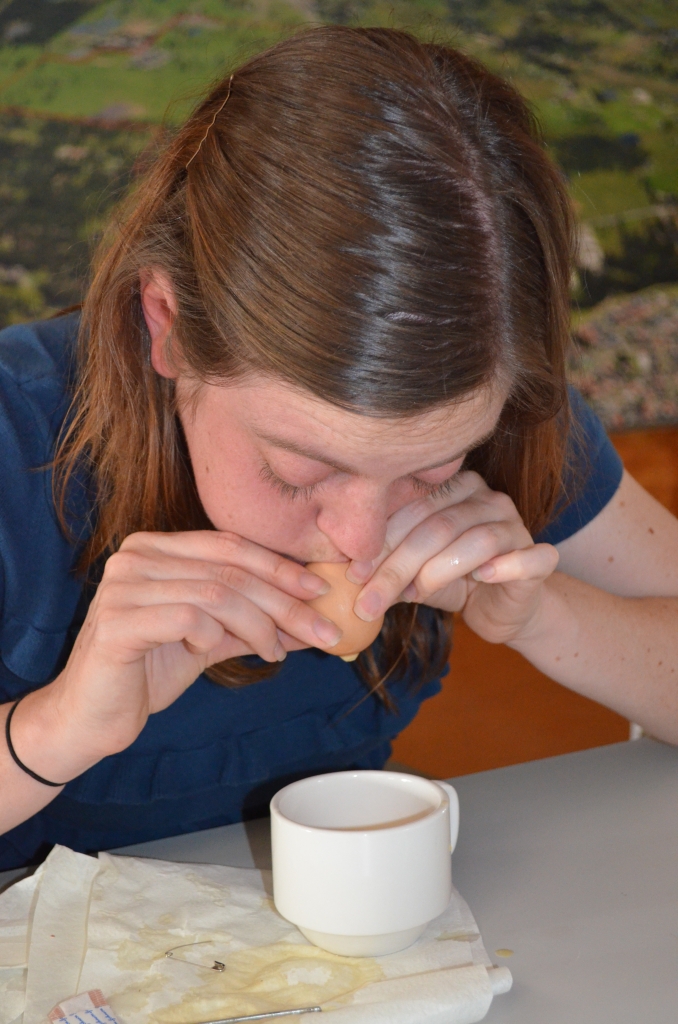
Blowing eggs for display in the Eat Your History: A Shared Table exhibition. Photo Scott Hill © Sydney Living Museums

Blowing eggs for display in the Eat Your History: A Shared Table exhibition. Photo Scott Hill © Sydney Living Museums
The finished display
Here’s the display as installed in the A Shared Table exhibition, which evokes a breakfast setting at Elizabeth Farm. It uses silverware and porcelain provenanced to the Macarthur family – you can read more about such a breakfast here. There are also bread rolls in the display; these were freeze dried prior to use.

Detail of Macarthur breakfast table from the Eat Your History: A Shared Table exhibition. Photo © Jamie North for Sydney Living Museums
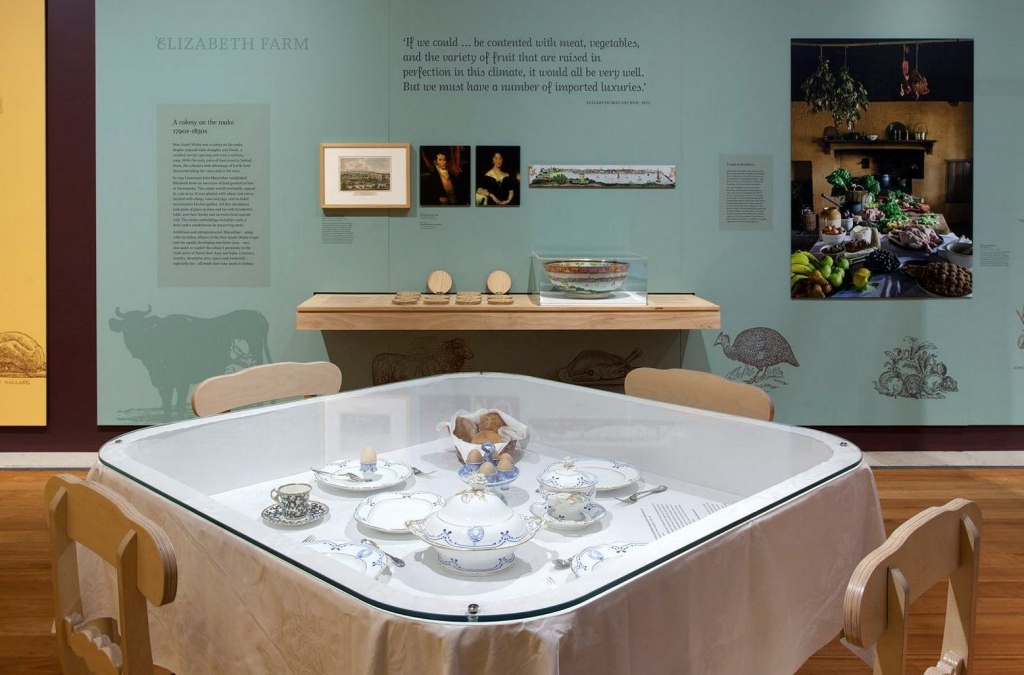
Macarthur breakfast table from the Eat Your History: A Shared Table exhibition. Photo © Jamie North for Sydney Living Museums
